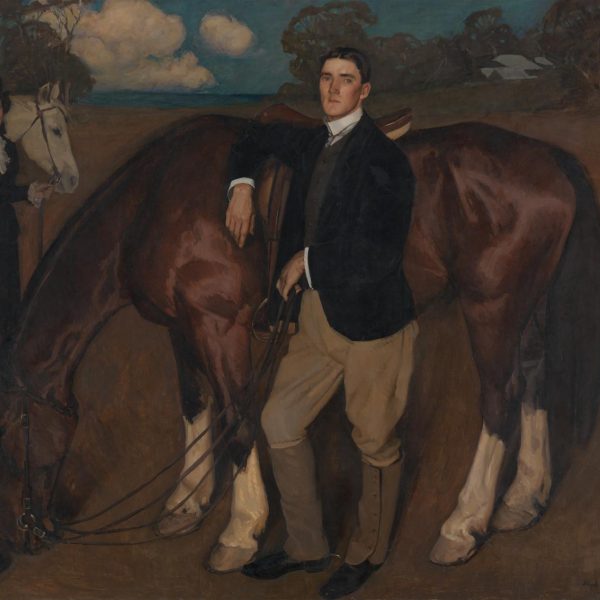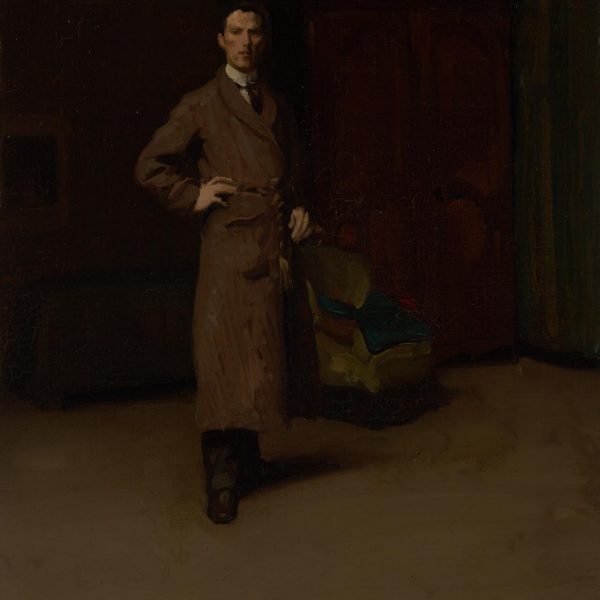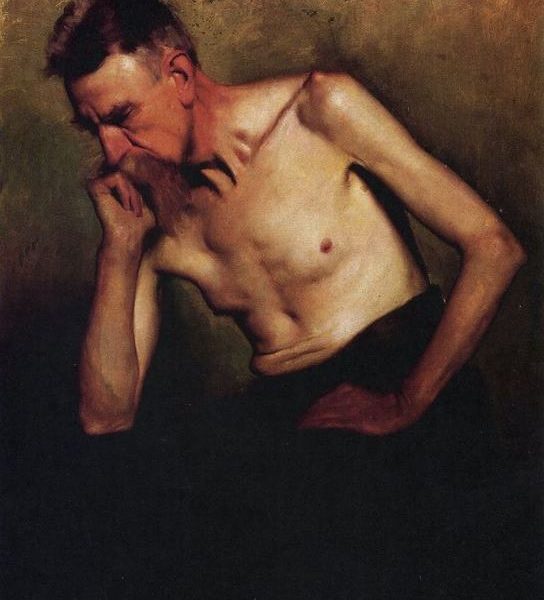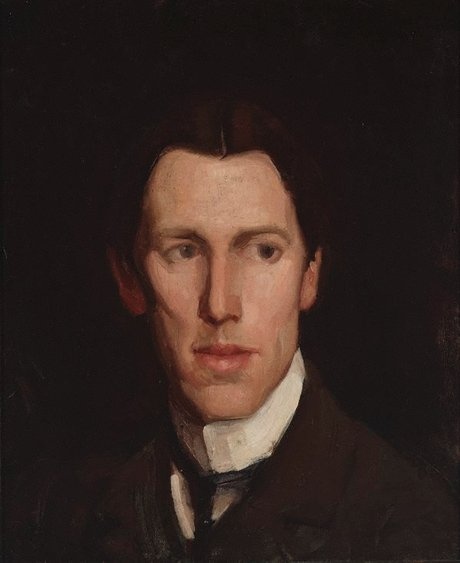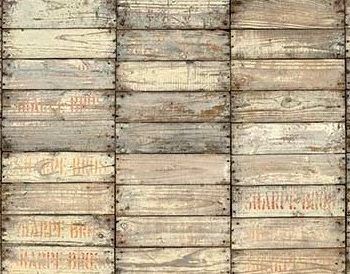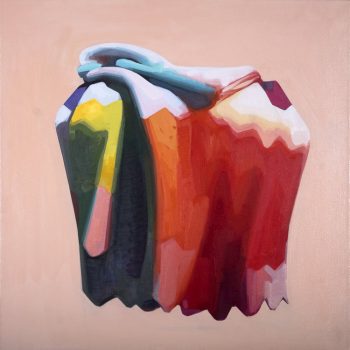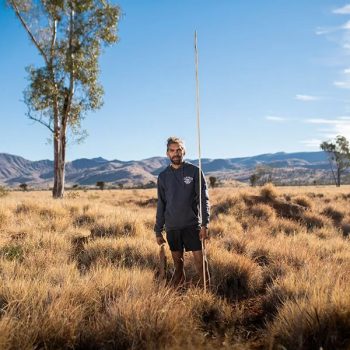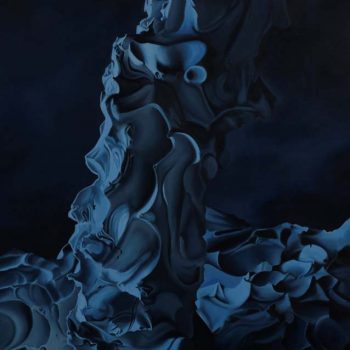HUGH RAMSAY
UNTIL 29 MARCH 2020
Fine art exhibition Canberra
________________________________________________________
Australian artist Hugh Ramsay (1877 – 1906) first came to my notice in the early 1990’s and has been a favourite artist ever since.
There are many reasons for this. Firstly, he was just sixteen years old when he entered the National Gallery schools in Melbourne. Secondly, he was so young when he died from consumption: a great talent taken early in life. Thirdly and most importantly, his art seemed to speak directly to me. Although I knew almost nothing about art at that time, it was an exhibition at the National Gallery Victoria (NGV) in the early 1990’s that set me on the long and thoroughly engrossing tertiary path of art history. I owe him a debt of kind and although I have looked at his greatest works many times over they never fail to move me as they did on the fateful day in the early 1990s.
________________________________________________________
19 TH CENTURY AUSTRALIAN ARTIST HUGH RAMSAY’S LIFE WAS SHORT LIVED
Hugh Ramsay (1877–1906) was an accomplished Australian artist whose portrait paintings achieved success here and in France before his untimely death at the age of 28.
This retrospective, the first to focus on Ramsay in more than a quarter of a century, brings together paintings, drawings, sketchbooks and letters from collections around the country to celebrate his achievements.
Displaying an uncommon passion for the visual arts early on, he entered the National Gallery School in Melbourne at 16, where he was nicknamed ‘Young Hughie’ by his fellow students.
Text NGA
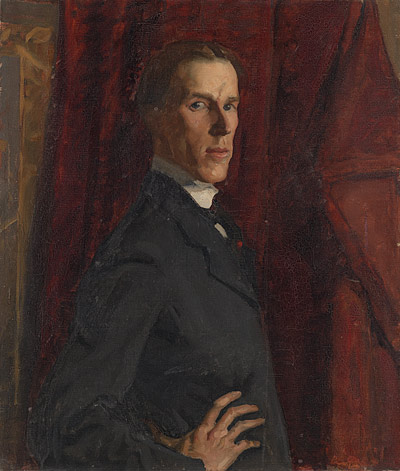
________________________________________________________

There [National Gallery School Melbourne], he developed his drawing and painting skills under the guidance of, among others, artist and teacher Bernard Hall, who tutored him on the importance of tone through careful study of the 17th-century Spanish master Diego Velázquez.
The exhibition includes key paintings and drawings from this time, some of which remained on display at the Gallery School and have inspired successive generations of artists.
Travelling abroad was one of the greatest aspirations for artists of the era, and Ramsay worked from a studio in Montparnasse, Paris for much of 1901–02. He painted some of his best canvases in the French capital.
Text NGA
Diego Velázquez collection Prado Madrid.
________________________________________________________
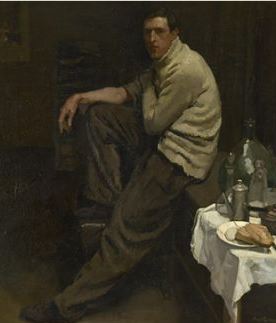
His painting A student of the Latin Quarter, 1901, epitomises the fulfilment of a bohemian ideal, while his subtle and perceptive self-portraits from this period reveal diverse facets of self. A portrait of his concierge’s daughter, Jeanne, 1901, was one of four works selected for the New Salon in Paris in 1902, an exceptional feat for a young Australian artist.
______________________
Ramsay was additionally a Master of the still life, as depicted in A student of the Latin quarter
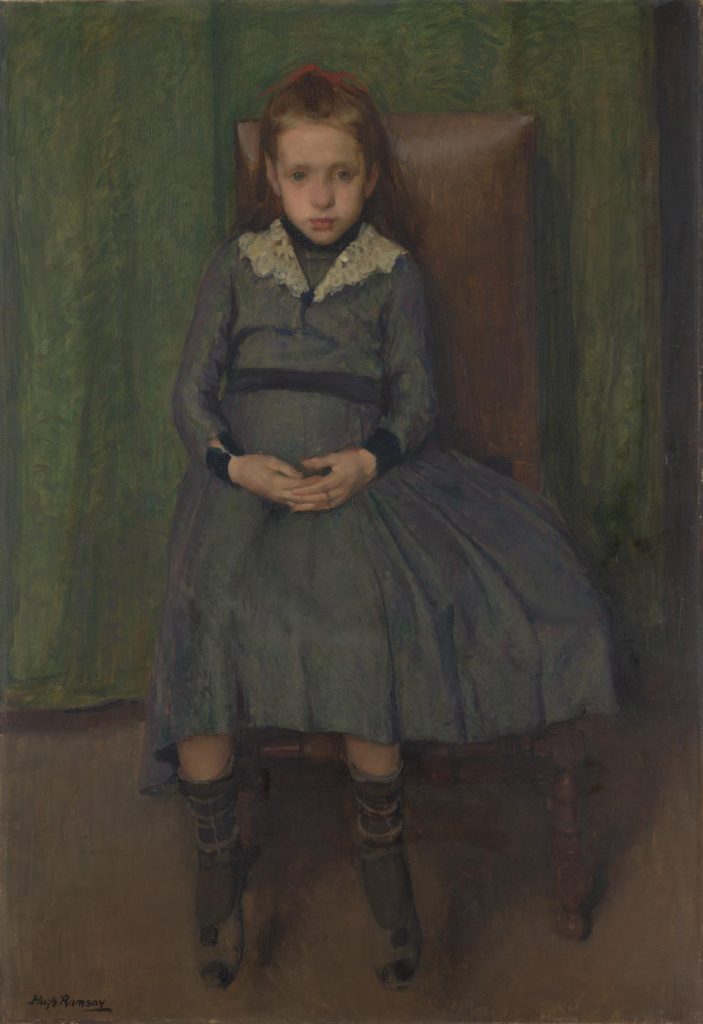
________________________________________________________
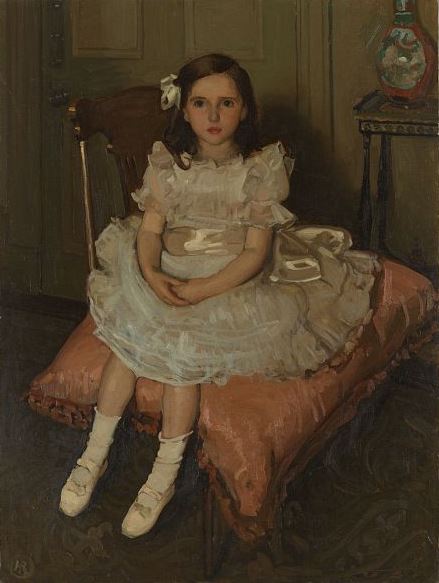
Upon his return to Australia, he painted Miss Nellie Patterson, 1903, a portrait of Dame Nellie Melba’s niece that was commissioned by the opera singer, who championed and supported the young artist.
_____________________
Impressed and grateful for his help, [Ambrose] Patterson introduced Ramsay to (Dame) Nellie Melba who invited him to paint her portrait in London. There he stayed with Longstaff who, like Melba, introduced his connexions. John Singer Sargent’s works at the Royal Academy impressed him profoundly. Ramsay seemed on the brink of success but within weeks of his arrival his doctor diagnosed tuberculosis, caused by the overwork and poor living conditions during two winters in Paris. An immediate return to Australia was prescribed.
Melba returned soon after Ramsay. She held an exhibition of his works at her Toorak house, Myoora, in December 1902 and commissioned him to paint her father and niece.
________________________________________________________
RAMSAY’S FIRST RESOLVED PAINTING AT AGE 14
Hugh attended Essendon Grammar School where in 1891 he was dux in his final year. It was in this same year he painted Kookaburra, the first painting to achieve a degree of notoreity for its resolution.
In 1894 he entered the National Gallery schools under Bernard Hall and Frederick McCubbin. Hall’s teaching steeped Ramsay in the tonal tradition of Velasquez and stimulated his interest in the portraiture of Whistler and Manet.
In 1897 he briefly attended classes with E. Phillips Fox and T.St G.Tucker at Charterisville, Heidelberg. John Longstaff recognized Ramsay’s promise, took a particular interest in his work, and remained a friend and mentor.
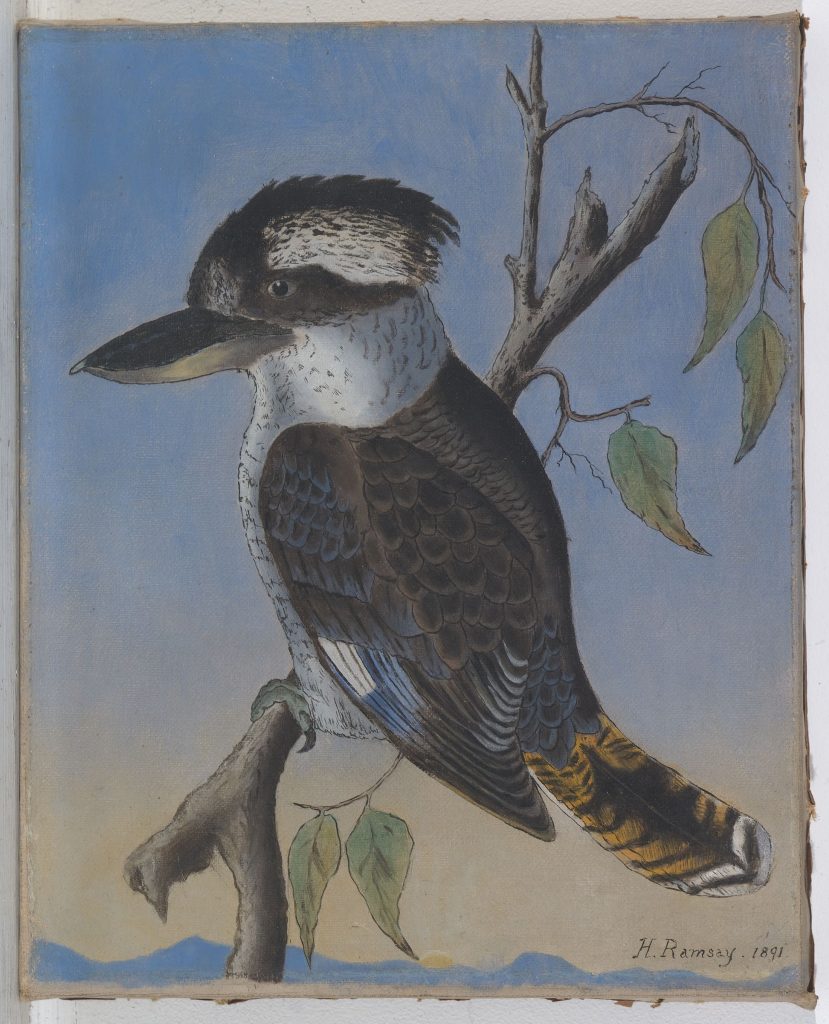
________________________________________________________
In April 1902 Ramsay won international acclaim when four of five paintings submitted to the New Salon [in Paris] were accepted and grouped together, an honour normally extended only to members of the Société Nationale des Beaux Arts. The paintings were ‘Jeanne’, ‘A Lady of Cleveland, U.S.A.’, ‘René Puaux’ and ‘Still Life: Books, Mask and Lamp’.
_____________________
Australians from the bush are known generally to be laconic and diffident. Ramsay’s incisive intellect and technical mastery brings out these qualities in his subjects.
There are many works in existance of Australian men (white torsos with sunburned faces and lower arms) displaying a weather beaten weariness from life on the land.
Tom is different: a hard working proud and innocent face; life’s problems are yet to make their mark there.
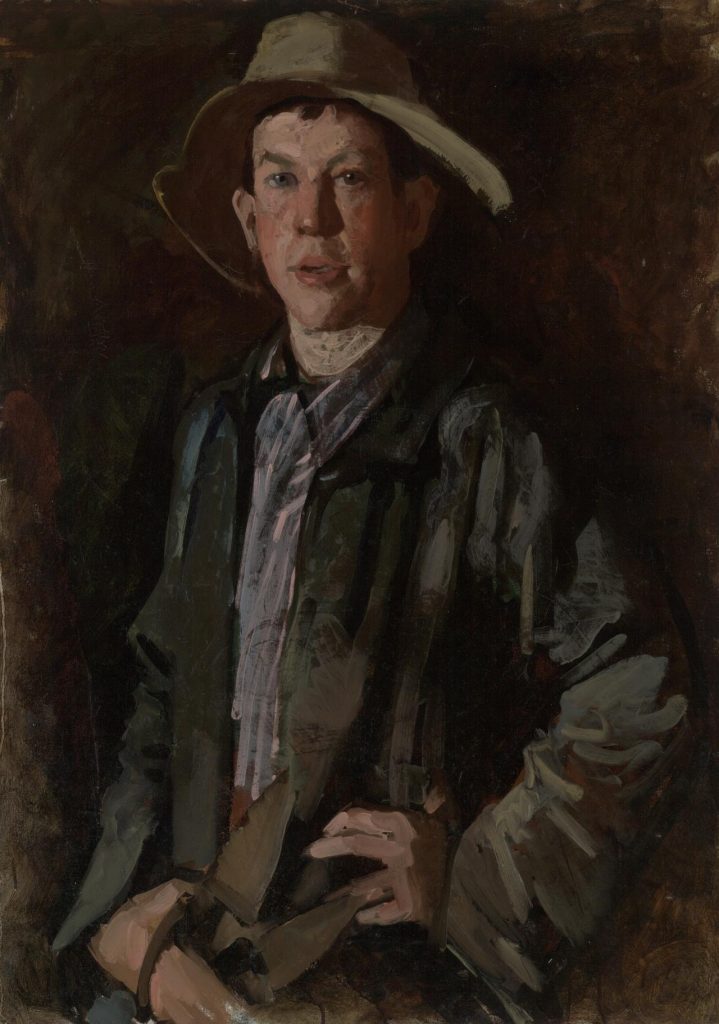
________________________________________________________
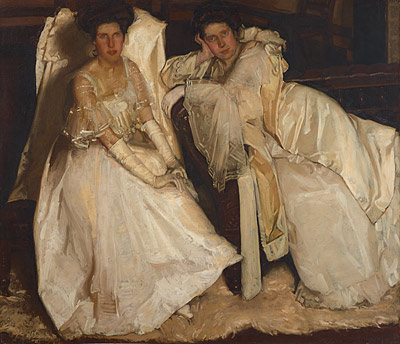
Like John Singer Sargent, Ramsay was technically astute and adept at painting ‘white’ in many and varied textures.
His sisters in Two girls in white (or, The Sisters), unaffected and emotionally subdued as they gaze at their brother after an evening out.
The power of their unique personalities is evident: a potent mix of sorrow, tiredness and resignation marks their respective faces in an intimate moment. A sense of one more mature than the other in the direct loving gaze.
At this time they knew their brother was dying.
Ramsay continued to work and exhibit at the Victorian Artists Society, and the last paintings he produced are among his greatest, including The Sisters, 1904. Ramsay died at his family’s estate, Clydebank, in Essendon, Victoria, in March 1906.
He was ‘undoubtedly one of the biggest artists in portraiture and figure painting that Australia has produced’,
________________________________________________________

